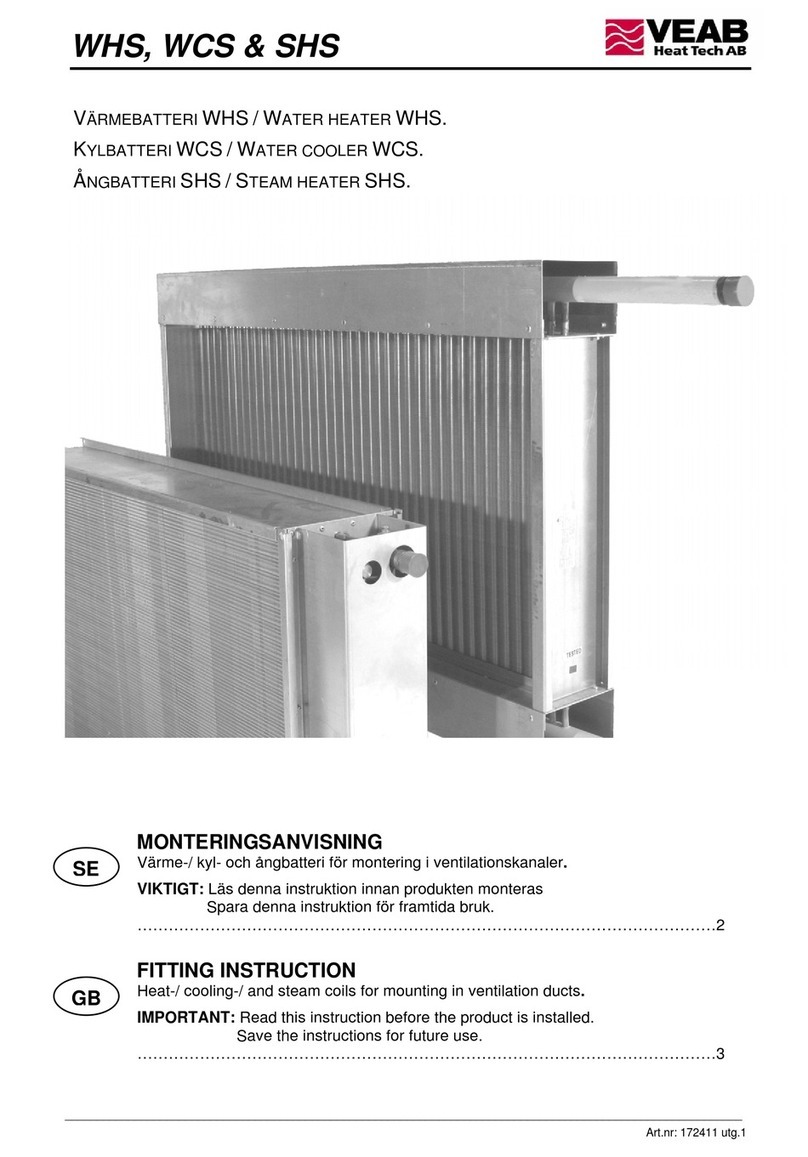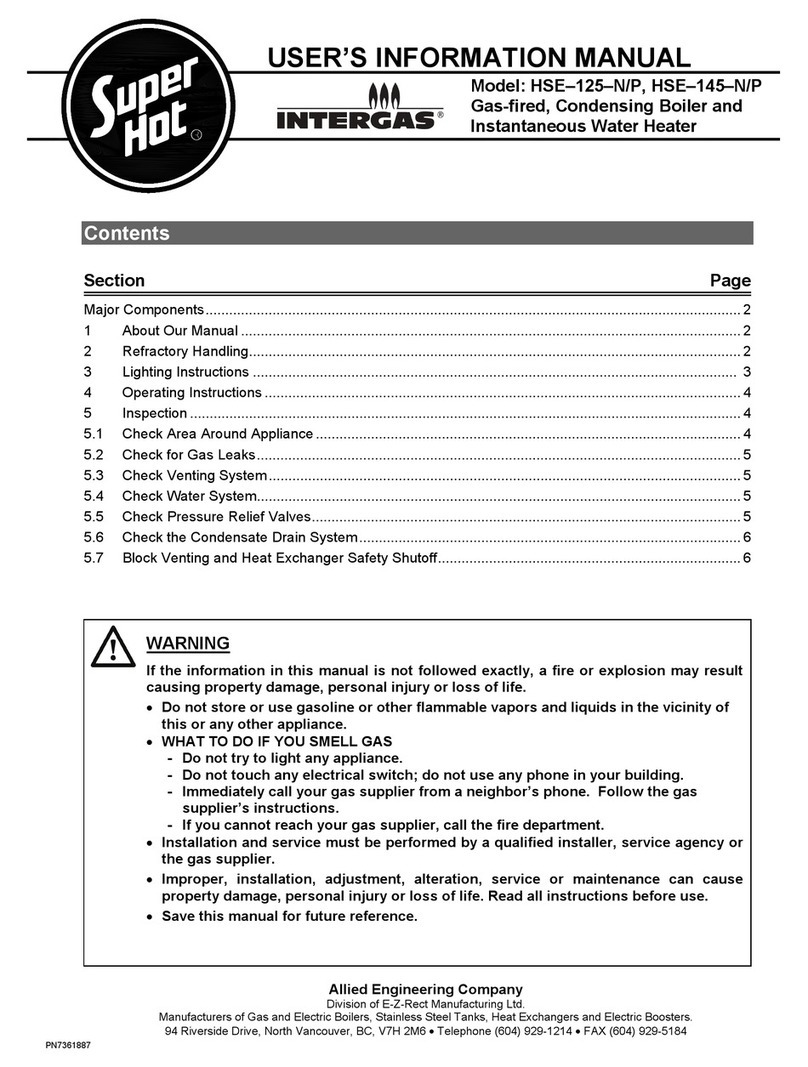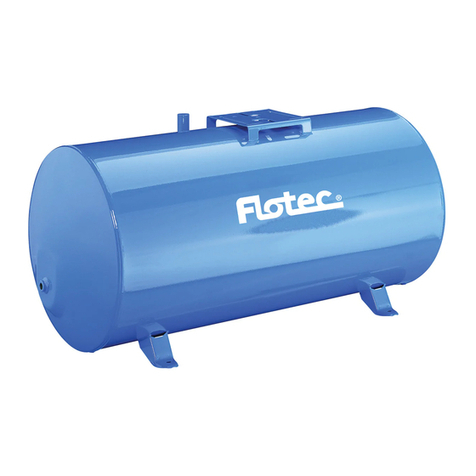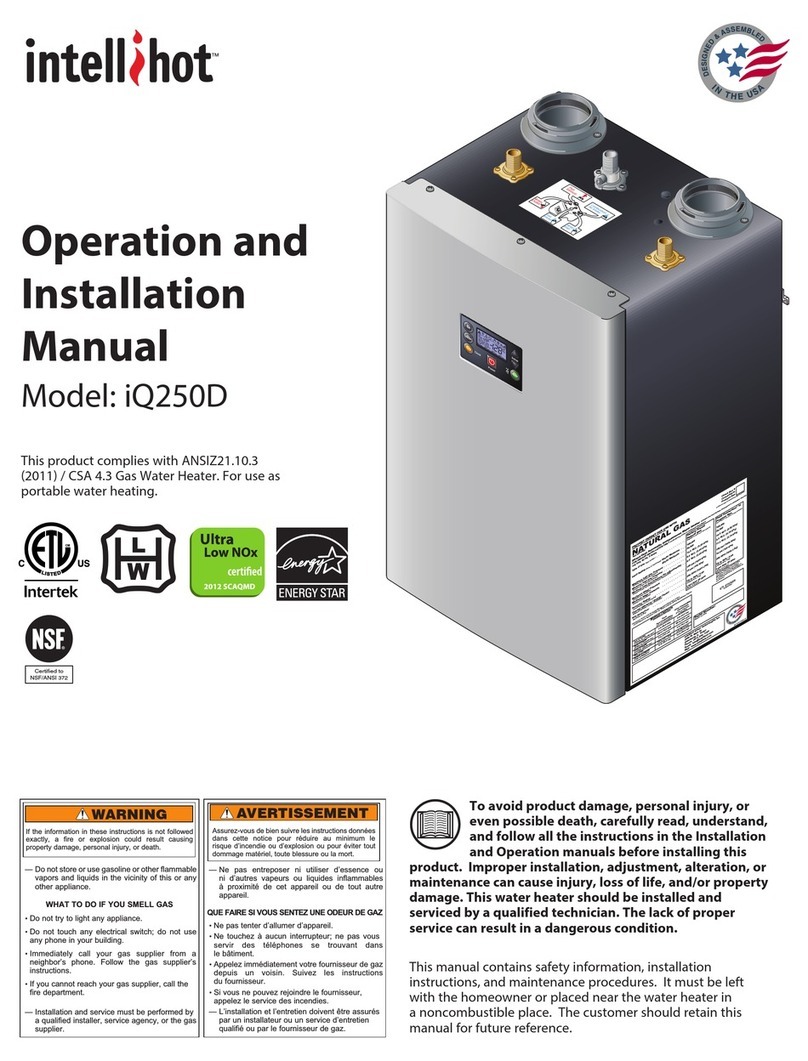Termat TWO Series Operating manual

TERMAT TWOxxx_ES_EN_ver3_Julio’23
1
Rev. 3
MANUAL DEL USUARIO Y DEL INSTALADOR
TERMAT TWOxxx
Estimado cliente, le agradecemos la confianza depositada en nuestra empresa al comprar
este producto.
Por favor, antes de instalar o utilizar el aparato por primera vez, lea atentamente estas
instrucciones.
Este Termo Eléctrico ha sido fabricado de acuerdo con los estándares de calidad más exigentes
y siguiendo lo establecido en las Normas Europeas de Seguridad Eléctrica y Compatibilidad
Electromagnética. Las características técnicas del aparato están indicadas en la placa de características
situada en la parte posterior de la tapa inferior de los termos.
La instalación debe ser llevada a cabo por personal cualificado. Cualquier trabajo de
reparación o mantenimiento (eliminación de incrustaciones calcáreas, cambio o revisión de
ánodo, etc...) debe ser llevado a cabo por Servicios de Asistencia Técnica Autorizados por
TERMAT.
MANUAL DEL INSTALADOR
Información técnica:
MODELO TWO050 TWO080 TWO100
CAPACIDAD 50 80 100
CARACTERÍSTICAS ELÉCTRICAS:
VOLTAJE (V) 230 230 230
FRECUENCIA (Hz) 50/60 50/60 50/60
POTENCIA (W) 2000
(1200W + 800W)
2000
(1200W + 800W)
2000
(1200W + 800W)
CLASE I I I
GRADO DE
PROTECCI
Ó
N IPX4
IPX4
IPX4
Tª REGULACIÓN
TERMOSTATO(ºC) 75 75 75
TIPO DE
TERMOSTATO DE
REGULACI
Ó
N
SONDA PTC SONDA PTC SONDA PTC
TIPO DE
TERMOSTATO DE
SEGURIDAD
BULBO BULBO BULBO
REGULACIÓN
EXTERIOR SI SI SI
TERM
Ó
METRO SI. DIGITAL SI. DIGITAL SI. DIGITAL
TIPO DE
RESISTENCIA
BLINDADA BAJO
VAINA
BLINDADA
BAJO VAINA
BLINDADA
BAJO VAINA
CARACTERÍSTICAS HIDRÁULICAS:
DEPÓSITO
ESMALTADO SI SI SI
ÁNODO DE
MAGN
É
SIO SI SI SI
P. NOMINAL 7.5 ba
r
7.5 ba
r
7.5 ba
r
P. V
Á
LVULA 8.5 ba
r
8.5 ba
r
8.5 ba
r

TERMAT TWOxxx_ES_EN_ver3_Julio’23
2
DIMENSIONES
MODELO TWO050 TWO080 TWO100
TOMAS DE AGUA G1/2’ G1/2’ G1/2’
A 470 570 570
B 860 900 1090
C 272 322 322
D 355 415 415
E 204 255 255
F 470 365 550
G 205 287 287
H 380 470 470
fig.-1 – Modelo TERMAT TWOxxx
1.- EMPLAZAMIENTO DEL APARATO.
Para minimizar las pérdidas de agua caliente, es conveniente emplazar el termo lo más cerca posible de
los puntos de utilización y, a ser posible, al abrigo de la intemperie.
El emplazamiento será elegido de forma que los conductos de entrada y salida puedan ser conectados
fácilmente con el menor número de codos posible, permitiendo, al mismo tiempo, la sustitución de la resistencia.
2.- ANCLAJE DEL APARATO
Por su diseño, los termos eléctricos TERMAT de esta serie están previstos para ser instalados en dos
posiciones, según se observa en la fig-2:
1. Vertical. En esta posición, la entrada de agua fría (F) está a la derecha y salida de agua caliente (C) a la
izquierda.
2. Horizontal pared izquierda. En este caso la entrada de agua fría (F) será siempre la de la parte inferior del
aparato y la salida de agua caliente (C) en la superior.
Observación: Independientemente de la instalación elegida, la válvula de seguridad y retención
suministrada con el aparato, debe de colocarse en el tubo de entrada de agua fría (F). En todos los casos hay que
dejar un espacio libre de, al menos, 60 cm. entre la tapa de registro del termo y la pared más cercana.

TERMAT TWOxxx_ES_EN_ver3_Julio’23
3
fig 2.- Modelos TERMAT TWOxxx
En todos los casos, fijación vertical o fijación horizontal, la pared debe ser suficientemente gruesa para
soportar el termo lleno de agua y el anclaje debe realizarse mediante cuatro tornillos de 8 mm de diámetro. En los
casos en los que la pared sea suficiente pero algo fina es aconsejable el uso de placas de refuerzo.
3.- CONEXIÓN HIDRÁULICA.
Antes de conectar el aparato a la red de agua, habrán de tenerse presentes las disposiciones que, sobre
la instalación de los mismos aparecen en el Código Técnico de Edificación, El Reglamento de Instalaciones
Térmicas en Edificios y las normas EN-UNE de Seguridad en Aparatos Electrodomésticos y Análogos parte 2:
Requisitos particulares para los termos eléctricos. Según estas disposiciones, debe de instalarse una llave de paso
(fig 3 – ‘1’) a la entrada y salida del termo para permitir su aislamiento de la red en caso de reparación o sustitución.
Además, el aparato deberá de llevar incorporada una válvula de seguridad y retención (fig 3 – ‘2’) que, por una
parte, evitará el retorno de agua caliente hacia la red de fría y, por otra, actuará cuando se produzcan
sobrepresiones superiores a la nominal del aparato. Esta sobrepresión es debida al aumento del volumen del agua
contenida en el termo, que se produce durante el calentamiento, motivo por el cual la válvula derramará por goteo
el 3% aproximadamente de la capacidad del aparato.
Para evacuar las gotas de agua que se desprenden a través de la válvula, deberá instalarse una tubería de
desagüe.
Fig-3 Instalación hidráulica

TERMAT TWOxxx_ES_EN_ver3_Julio’23
4
Puesta en servicio:
Antes de conectar hidráulicamente el termo, dejar fluir el agua durante unos minutos a fin de que se elimine
cualquier cuerpo extraño que haya en las tuberías, el cual pueda obstruir o dañar la válvula de seguridad alterando
el funcionamiento de la misma.
Llénese el termo dejando abierto el grifo de agua caliente para expulsar el aire del aparato; ciérrese el grifo
cuando salga el agua. Cuando el agua esté caliente hay que reapretar los racores de entrada y salida para evitar
cualquier posible escape de agua.
Es conveniente asegurarse que la presión de la instalación de agua no sea superior a la presión nominal del
aparato. En caso de que así sea, es necesario instalar un regulador de presión inmediatamente después del
contador de agua de la vivienda.
Antes de poner en funcionamiento el termo eléctrico, asegurarse de que el aparato está correctamente
lleno de agua abriendo un grifo de agua caliente, y de que se ha efectuado completamente la instalación
eléctrica.
4.- CONEXIÓN ELÉCTRICA.
La instalación eléctrica debe de realizarse conforme a la reglamentación en vigor por instaladores
autorizados.
Estos modelos deben ser conectados a la red eléctrica mediante la clavija del cable eléctrico de
alimentación suministrado con el aparato. Por tanto la única operación a realizar, desde el punto de vista eléctrico,
será la conexión de este cable a una base de corriente. Si el cable flexible de alimentación de este aparato está
dañado debe ser sustituido por el cable de alimentación especial TERMAT referencia 91027.
Es también indispensable el instalar siempre un interruptor omnipolar a la red de alimentación eléctrica,
con una apertura mínima entre los contactos de 3 mm.
A continuación se muestra el esquema eléctrico de cada uno de los modelos:
Fig. – 4 Esquema unifilar modelo TERMAT – TWOxxx
5.- NORMATIVA DE CONEXIÓN ELÉCTRICA.
La instalación eléctrica del termo, está regulada por las normas específicas incluidas en el Reglamento
Electrotécnico para baja tensión y la norma CEI 64-8. Según el cual, para la utilización del mismo en baños y
cuartos de aseo, deben tenerse en cuenta las siguientes indicaciones:

TERMAT TWOxxx_ES_EN_ver3_Julio’23
5
1.- En la zona 0 queda totalmente prohibida la instalación de cualquier aparato eléctrico. También queda prohibida
la instalación dentro de la zona 1 si se trata de una cabina de ducha fabricada de antemano.
2.- En las zonas 1 y 2 se pueden instalar aparatos eléctricos con protección contra penetraciones de agua del tipo
IPX4, siempre y cuando se conecten mediante un cable a una toma de corriente protegida mediante un interruptor
diferencial, colocada a más de 1.2 m. de la vertical de la ducha.
3.- En la zona 3 se pueden instalar aparatos cuyo índice de protección contra la penetración de agua se IPX1.
4.- Es obligatoria la conexión a tierra del termo. Si el local o vivienda no tuviese línea de tierra, recomendamos
utilizar un interruptor diferencial
Para una instalación correcta y segura de los termos eléctricos se recomienda su ubicación en la zona 3
(fig.- 5).
Fig. – 5
6.- RECOMENDACIONES DE INSTALACIÓN
Para un correcto funcionamiento y mantenimiento de los termos eléctricos fabricados por TERMAT, es
necesario tener en cuenta las siguientes consideraciones:
1. Las presiones máximas y mínimas de agua en el interior de la vivienda deben de mantenerse dentro de los
límites establecidos por el Código Técnico de Edificación entre 1.5 y 5 bar. Así mismo, tal y como se advierte
en el punto 3 del presente manual, es obligatorio montar un grifo de corte a la entrada y salida del aparato y
una válvula de seguridad y retención también a la entrada.
2. También es necesario la instalación de una tubería de desagüe para la evacuación de las gotas de agua que
se desprenden a través de la válvula de seguridad. Los daños sufridos en la vivienda producidos por el citado
goteo no son, en ningún caso, responsabilidad de TERMAT.
3. Para presiones superiores a los 2.5 bar es muy frecuente el goteo de la válvula. En caso de que sea molesto
para el usuario, o que la instalación, debido a su antigüedad, no permita el desalojo del agua proveniente de
la válvula, TERMAT recomienda la instalación de una válvula reductora de presión, regulada entre 2.5 y 3 bar,
y un vaso de expansión. La válvula reductora de presión debe de instalarse lo más cerca posible de la
acometida de la vivienda y alejada, a su vez, de la entrada del agua al aparato. Por otra parte, el vaso de
expansión debe de tener las dimensiones adecuadas e instalarse, en cualquier punto de la instalación de ACS
de la vivienda. No obstante, puede preguntar al Servicio Técnico de TERMAT para resolver cualquier duda
que le surja a este respecto.
4. El agua de la red de suministro debe de tener unos requisitos mínimos para que sea considerada admisible
desde el punto de vista de la corrosión. Los límites establecidos por TERMAT, basados en estándares
internacionales, son los siguientes:
Indice de Ryznar menor que 7.
Conductividad a 25 ºC < 350 /cm
Concentración de iones de Cloro (Cl-) y Sodio (Na+`) inferiores a 75 mg/l
0.6m
0.6m
2.4m
b) Ducha
Zona1
Zona2
Zona3
Zona0
Zona1
Zona2
Zona3
2.25m
Zona0
Zona1
Zona2
Zona3
2.25m
Zona0
Zona1
Zona2
Zona3
0.6m 2.4m
2.4m
0.6m
2.4m
0.6m
a) Bañera alzado
a) Bañera planta b) Ducha sin plato de ducha

TERMAT TWOxxx_ES_EN_ver3_Julio’23
6
5. El uso de descalcificadores de agua está permitido siempre que queden regulados de tal forma que la dureza
total del agua quede entre 12ºF y 31 ºF. En caso de que este nivel de cal no sea suficiente para el usuario,
debe ser instalado un by-pass que evite la entrada del agua del descalcificador directamente al termo.
6. Por último, el termo debe ser instalado en un lugar de fácil accesibilidad que permita la sustitución de los
componentes o la reparación del mismo de forma sencilla y segura (ver, adicionalmente, los apartados 1 y 2
del Manual del Instalador). De este modo la instalación del termo en tragaluces, falsos techos, altillos, armarios,
etc... no es recomendable. En cualquier caso, es competencia del Servicio Técnico TERMAT determinar si la
ubicación del aparato es aceptable o no.
MANUAL DEL USUARIO
1.- INSTRUCCIONES DE USO
IMPORTANTE: Asegúrese que el termo está lleno de agua, abriendo un grifo de agua caliente.
Para poner en marcha el aparato proceder como sigue considerando el display y pulsadores que aparecen
en la siguiente figura:
Fig. – 6
1) Botón de ‘ON/OFF’ y selección de modo. Cuando el aparato está apagado, si presionamos el botón
durante 3 segundos, el sistema se inicia y el display se ilumina. Si hacemos la operación contraria,
presionamos nuevamente el botón durante 3 segundos, el aparato y el display se apagan. Si el aparato
está ya activado, se puede elegir ente tres modos: modo tanque individual (solamente funciona la
resistencia del tanque de izquierda), modo tanque doble (funcionan ambas resistencias) o modo
‘SMART’ en el que las resistencias de ambos tanques funcionan simultáneamente de forma inteligente
para aportar el confort deseado al usuario. Si la electricidad se corta súbitamente, en el momento del
restablecimiento, el aparato vuelve al mismo modo que habías sido seleccionado previamente.
Únicamente, si el modo es el SMART, el termo se reinicia en el modo tanque individual.
2) El botón ‘2’ es el que permite regular la temperatura deseada y gira 360º. Si se gira en el sentido de
las agujas del reloj, la temperatura se incrementa y si se gira en el sentido contrario, la temperatura
disminuye. Durante esta operación en el display ‘7’ se muestra la temperatura seleccionada. Pasados
unos segundos, en el display se vuelve a mostrar la temperatura del agua dentro del tanque. Si se
elige el modo ‘SMART’ la temperatura no puede ser seleccionada y el aparato utiliza un sistema de
control inteligente que optimiza la cantidad de agua caliente y el confort del usuario.
3) El piloto ‘3’ se ilumina en blanco cuando el aparato está funcionando en modo tanque individual.
4) El piloto ‘4’ se ilumina en blanco cuando el aparato está funcionando en modo tanque doble.
5) El piloto ‘5’ se ilumina en azul cuando el aparato se conecta a la red eléctrica. Si se ha seleccionado e
modo SMART el citado piloto parpadea.
6) El piloto 6 se ilumina en rojo si alguna de las resistencias están funcionando. En caso contrario
permanece apagado

TERMAT TWOxxx_ES_EN_ver3_Julio’23
7
2.- LIMPIEZA.
Las partes externas del termo deben ser limpiadas mediante agua jabonosa, evitado cualquier tipo de productos
agresivos.
NUNCA INTENTE REPARAR USTED MISMO LOS POSIBLES PROBLEMAS QUE APAREZCAN EN SU
TERMO ELÉCTRICO. LLAME INMEDIATAMENTE AL SAT AUTORIZADO MÁS PRÓXIMO PARA QUE
REALICE EL TRABAJO.
3.- CICLO DESINFECCIÓN TÉRMICA ANTILEGIONELA
Con objeto de reducir la proliferación de la Legionela en el interior del termo eléctrico, se deben de realizar
ciclos de desinfección con la frecuencia recomendada en los siguientes casos:
1) Si el aparato esta desconectado durante más de un mes, debe de realizarse un ciclo de desinfección en
el momento del encendido del mismo.
2) Si la temperatura del agua se mantiene constante por debajo de los 55 °C de forma habitual, se debe de
realizar un ciclo de desinfección cada tres meses cómo mínimo.
Para realizar el citado ciclo, se debe de proceder a situar el mando de regulación de temperatura en su posición
máxima (>70ºC). Una vez alcanzada la citada temperatura, dejar el mando de regulación en esta posición durante
10’. Transcurrido este tiempo, se puede volver a regular el termo a la temperatura deseada de forma habitual.
¡IMPORTANTE!: Cuando se acaba de realizar el tratamiento de desinfección térmica, la temperatura del agua en
el termo puede provocar graves quemaduras al instante. Los niños, las personas discapacitadas y los ancianos
son las personas con más alto riesgo de quemaduras. Controle la temperatura del agua antes de darse un
baño o ducharse.
4.- VACIADO DEL TERMO EN CASO DE HELADAS
Es imprescindible vaciar el aparato si éste debe de estar sin funcionar en un local expuesto a las heladas.
Para realizar el vaciado proceder a:
oCortar la corriente eléctrica.
oCerrar la entrada de agua fría.
oVaciar el calentador mediante la maneta del grupo de seguridad.
oProteger el grupo de seguridad.
oAntes de proceder a la conexión a la red eléctrica del termo, llenar el aparato de agua.
oPonerse en contacto con el instalador si el grupo de seguridad se ha congelado.
5.- DIAGNÓSTICO DE ERRORES
Cuando se produce un fallo en el termo eléctrico, automáticamente la resistencia deja de funcionar y
aparece en el display el código del error que se ha producido. En este momento no actúa ya ninguno de los
pulsadores y la única forma de eliminar el error y volver a dejar el aparato operativo es desconectarlo de la red
eléctrica, repararlo y conectarlo nuevamente.
El significado de los códigos de error son los siguientes:
CÓDIGO DE
ERROR
CAUSA ACCIÓN
E2
El termo se ha conectado en vacío, sin
agua dentro del tanque.
Desconectar el termo de la red eléctrica,
asegurarse que está lleno de agua y volver a
conectar el aparato.
E3
Protección por sobretemperatura. El
agua dentro del tanque ha superado el
máximo permitido.
Contactar con el servicio técnico para la solución
del problema.
E4 Fallo en el sensor de temperatura. Contactar con el servicio técnico para la solución
del problema.

TERMAT TWOxxx_ES_EN_ver3_Julio’23
8
USER'S AND INSTALLATION MANUAL
TERMAT TWOxxx
Dear buyer, we thank you for purchase of our product.
Prior to installation and first use of the electric water heater, please carefully read these
instructions.
This water heater has been manufactured in compliance with the relevant standards and tested
by the relevant authorities as indicated by the Safety Certificate and the Electromagnetic Compatibility
Certificate. The technical characteristics of the product are listed on the label affixed between the inlet
and outlet pipes. The installation must be carried out by qualified staff. All repairs and maintenance work
within the water heater, e.g. lime removal or inspection/replacement of the protective anticorrosion
anode, must be carried out by the authorised maintenance service provider.
INSTALLATION MANUAL
Technical Information:
MODEL TWO050 TWO080 TWO100
CAPACITY 50 80 100
ELECTRICAL CHARACTERISTICS:
VOLTAGE (V) 230 230 230
FREQUENCY (Hz) 50/60 50/60 50/60
POWER (W) 2000
(1200W + 800W)
2000
(1200W + 800W)
2000
(1200W + 800W)
CLASS I I I
PROTECTION
DEGREE IPX4
IPX4
IPX4
REGULATION
THERMOSTAT
TEMPERATURE
(ºC)
75 75 75
KIND OF
REGULATION
THERMOSTAT
PTC SENSOR
PTC SENSOR
PTC SENSOR
KIND OF SAFETY
THERMOSTAT BULB BULB BULB
EXTERNAL
TEMPERATURE
REGULATION
YES
YES
YES
KIND OF
HEATING
ELEMENT
YES -
ELECTRONIC
YES -
ELECTRONIC
YES -
ELECTRONIC
KIND OF
HEATING
ELEMENT
DRY HEATING
ELEMENT
DRY HEATING
ELEMENT
DRY
HEATING
ELEMENT
HYDRAULIC CHARACTERISTIC
S
:
ENAMELLED
TANK YES
YES
YES
MAGNESIUM
ANODE YES
YES
YES
NOMINAL
PRESSURE 7.5 bar 7.5 bar 7.5 bar
SAFETY VALVE
PRESSURE 8.5 bar 8.5 bar 8.5 bar

TERMAT TWOxxx_ES_EN_ver3_Julio’23
9
DIMENSIONS
MODELO TWO050 TWO080 TWO100
WATER
CONNECTIONS
G1/2’ G1/2’ G1/2’
A 470 570 570
B 860 900 1090
C 272 322 322
D 355 415 415
E 204 255 255
F 470 365 550
G 205 287 287
H 380 470 470
fig.-1 – Model TERMAT TWOxxx
1.- BUILDING-IN.
The water heater shall be built-in as close as possible to the outlets in order to reduce the heat loses.
The building place must be chosen considering the maximum reductions of 90º elbows in water connections
and, at the same time, make easy the substitution of the heating element.
2.- APPLIANCE WALL HANG.
Due to its particular design, the TERMAT electrical water heaters could be installed in two positions as you
could see at fig-2:
1. Vertical. At this position cold water inlet pipe (F) is on the right side and hot water outlet pipe (C) on the left
side. The hydraulic safety valve supplied with the appliance must be installed at the inlet cold water pipe
(F)..
2. Horizontal with maintenance cover on left side. In this case inlet cold water pipe (F) will be placed every
time in the bottom pipe and hot water outlet pipe (C) in the upper part. The safety valve must be installed
in the bottom pipe

TERMAT TWOxxx_ES_EN_ver3_Julio’23
10
Fig. 2 Model TERMAT TWOxxx
In every case the distance between water heater maintenance cover and the closer wall must be minimum 60
cm.
It has to be fitted to the wall using appropriate rag bolts with minimum diameter of 8 mm. The wall with feeble
charging ability must be on the spot where the water heater shall be hanged suitably reinforced.
3.- CONNECTION TO THE WATER SUPPLY.
The water heater may be connected to a closed-circuit pressure system which enables several points of
use. For safety reasons the supply pipe must be fitted with a return safety valve or alternatively, a valve of the safety
class that prevents the pressure in the tank from exceeding the nominal pressure by more than 0.1 MPa. The
heating of water in the heater causes the pressure in the tank to increase to the level set by the safety valve. As
the water cannot return to the water supply system, this can result in the dripping from the outlet of the safety valve.
The drip can be piped to the drain by installing a catching unit just below the safety valve. The drain installed below
the safety valve outlet must be piped down vertically and located in the environment that is free from the onset of
freezing conditions. In case the existing plumbing does not enable you to pipe the dripping water from the return
safety valve into the drain, you can avoid the dripping by installing a 3-litre expansion tank on the inlet water pipe
of the boiler. You should ensure that the return safety valve is functioning properly by checking it on a regular basis
i.e. every 14 days. To check the valve, you should open the outlet of the return safety valve by turning the. The
valve is operating properly if the water comes out of the nozzle when the outlet is open.
F
C
Fig-3 Hydraulic installation
Legend:
1- Return safety valve 6- Checking fitting
2- Checking valve connection 7- Funnel with outlet connection
3- Non-return valve
4- Pressure reduction valve F - Cold water
5- Closing valve C - Hot water

TERMAT TWOxxx_ES_EN_ver3_Julio’23
11
Putting into service:
Before connect hydraulically the water heater to water network lets the water flow some to time to remove
all dirty which could damage the safety valve and block the diffuser.
To fill the water heater properly leave a hot water tap open to drain the water heater tank and only close it
when water comes out fluently. When water become hot after the necessary time tight again all connections to
assure a correct water sealing.
If the water network pressure is higher than the nominal pressure of the water heater, it is compulsory to
install special valve to reduce the water inlet pressure between 2 and 3 bar.
4.- CONNECTION OF THE WATER HEATER TO THE ELECTRIC NETWORK.
The connection of water heater to the electric network must be performed according to standards for electric
installation and made by authorized installers.
These models must be connected to electrical network using a plug supplied assembled to the water heater.
According to this the sole necessary operation from electrical point of view is to plug the water heater to a socked.
If the flexible cord is damaged, it must be substituted by an especial plug cord TERMAT reference 91027.
Because the water heater has no components which would permanently separate it from the electric
network, upon the cable connection between it and permanent installation a switch must be installed which breaks
both power supply poles having between the open contacts a gap at least 3 mm wide.
The below drawing shows the electrical water heater diagram:
Fig. – 4 TERMAT TWOxxx electrical diagram
5.- ELECTRICAL CONNECTIONS STANDARDS.
The electrical installation must fulfil the international standards CEI 64-8. According to this standards,
electrical appliances must be installed following the below indications at bathrooms and WC:
1.- zone 0: Installation is totally forbidden at this area. It is also forbidden at zone 1 if it is a prefabricated shower
cabin.
2.- zones 1 and 2: IPX4 appliances with a wire which allows connections 1,2 m from shower vertical and with an
additional RCS switch.
3.- zone 3: IPX1 appliances allowed.
4.- The earth connection of the water heaters is compulsory.
We recommend the installation of the water heaters at zone 3 (fig.- 5).

TERMAT TWOxxx_ES_EN_ver3_Julio’23
12
Fig. – 5
6.- INSTALLATION RECOMMENDATIONS
In order to have a correct operation of the TERMAT electric water heater, please take into account the below
considerations:
1. Water pressure at electric water heater inlet must be between 1.5 and 5 bar. Also all considerations explained
at point 3) of this manual must be taken into account.
2. It is compulsory to install a drain pipe to evacuate water drops from safety valve. Possible damages caused at
home due to these drops are not responsibility of TERMAT.
3. If water pressure is higher than 2.5 bar we recommend the installation of a pressure reduction valve and a
expansion vessel. The pressure reduction valve must be installed as close as possible from the house water
inlet pipe.
4. The network water must have a minimum quality characteristics to be acceptable under corrosion point of view.
The limits established by TERMAT are the below ones:
Ryznar index less than 7.
Conductivity at 25 ºC < 350 /cm
Chlorine (Cl-) and sodium (Na+`) less than 75 mg/l
5. The use of chemical scale eliminators is allowed but the hardness must be regulated between 12ºF and 31 ºF.
USER’S MANUAL
1.- USER'S INSTRUCTIONS
IMPORTANT: Be sure that the water heater is filled with water before plug in. You could be sure that the
water heaters if completely filled when water come out from a hot water tap.
To operate the appliance proceed as it is indicated below and consider the display showed at next figure:
0.6m
0.6m
2.4m
b) Shower
Zone 1
Zone 2
Zone 3
Zone 0
Zone 1
Zone 2
Zona3
2.25m
Zone 0
Zone 1
Zone 2
Zone 3
2.25m
Zona0
Zone 1
Zone 2
Zone 3
0.6m 2.4m
2.4m
0.6m
2.4m
0.6m
a) Bath tube front view
a) Bath tube b
)
Shower without shower
p
late

TERMAT TWOxxx_ES_EN_ver3_Julio’23
13
Fig. – 6
1) The"1" refers to the water heater power switch button and mode button. In the shutdown state, long
press this button for 3 seconds, the system boot, the display light, and vice versa. At boot mode: press
this button, then switch between "single tank mode", “double tank mode” or "smart mode". If electricity
fall dawn suddenly, the water heater restarts in previous selected mode. Only if model is “smart” one,
appliance starts again in “single tank” mode.
2) The "2" refers to the temperature regulating knob of the water heater. This knob is adjusted by 360
degrees, clockwise rotation, increasing temperature, anticlockwise rotation, and decreasing
temperature. During the rotation, the "7" number of the display screen changes accordingly. When you
enter the smart mode, you can't adjust the setting temperature, and the system starts the intelligent
control program by default
3) The "3" is a single tank model indicator lamp. When the user sets the water heater as a single tank
mode, the indicator light is lit and the display is white
4) The "4" is the double tank model indicator lamp. When the user sets the water heater as the double
tank mode, the indicator light is lit and the display is white.
5) The"5" for the power indicator. The water heater is energized and the indicator light is lit to show blue.
If users choose smart mode, flashing display.
6) The "6" as the heating indicator light, water heater in the heating state, indicator light shows red; if the
water heater is not heated, the lights go out.
2.- CLEANING.
The external parts of the water heater may be cleaned with a mild detergent solution. Do not use solvents and
abrasives.
Never try to repair any possible faults of the water heater by yourself, but inform about it the
nearest authorised service workshop.
3.- LEGIONELLA THERMAL DISINFECTION CYCLE
In order to reduce the proliferation of Legionella inside the electric water heater, disinfection cycles should be carried out
with the recommended frequency in the following cases:
1) If the device is disconnected for more than a month, a disinfection cycle must be carried out when it is switched on.
2) If the water temperature is kept constantly below 55°C on a regular basis, a disinfection cycle should be carried out at
least every three months.

TERMAT TWOxxx_ES_EN_ver3_Julio’23
14
To carry out the aforementioned cycle, the temperature regulation knob must be placed in its maximum position (> 70ºC).
Once the aforementioned temperature has been reached, leave the adjustment knob in this position for 10 '. After this time, the
water heater can be adjusted to the desired temperature as usual.
WARNING!: When the thermal disinfection treatment has just been carried out, the temperature of the water in the water heater
can instantly cause severe burns. Children, disabled and the elderly are the people at highest risk for burns. Check the water
temperature before taking a bath or shower.
4.- WATER HEATER DRAIN IN CASE OF FROST
At any risk for freezing of water in the water heater, the water must be emptied from it. In order to do it,
please follow the below instructions:
oUnplug the appliance from electrical network.
oClose the water inlet to the water heater.
oDrain the water heater using the safety valve.
oProtect the safety valve from freezing.
oFill the water heater before plug in it again to electrical network.
5.- TROUBLE SHOOTING
When the water heater fails, automatically the heating element stops working and the display shows the
corresponding fault code. At that moment, if you press any button, there is not answer from the water heater. Only
disconnect the power, call to after sales service to solve the problem and repair the water heater and connect it
again makes that the fault code will be eliminated.
The fault code meaning is the below one:
FAULT ERROR CAUSE ACTION
E2
Dry burning protection. The water
heater operates without water at tank
Disconnect the appliance power, fill the water
heater tank and, then, plug it again. If the fault
cannot be removed, contact a qualified service
technician.
E3 Over-temperature protection
contact a qualified service technician
E4 Temperature sensor failure. contact a qualified service technician

TERMAT TWOxxx_ES_EN_ver3_Julio’23
15
TELÉFONO SERVICIO DE ASISTENCIA
TÉCNICA OFICIAL
93 474 24 23
LUNES – JUEVES 08:00 – 18:00
VIERNES 08:00 – 15:00
This manual suits for next models
3
Table of contents
Languages:
Popular Water Heater manuals by other brands

Girard Products
Girard Products GSWH-1 Service manual

Zodiac Aerospace
Zodiac Aerospace L13471 Maintenance manual
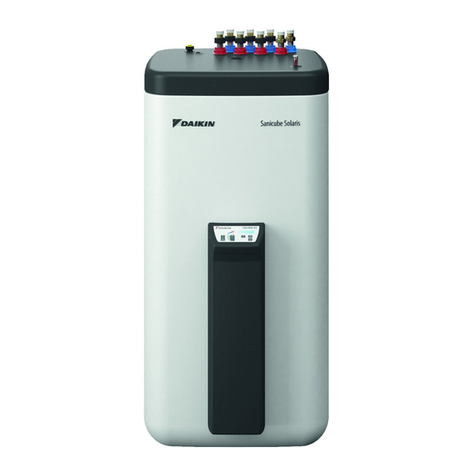
Daikin
Daikin EKHWCH300B Installation and operating manual
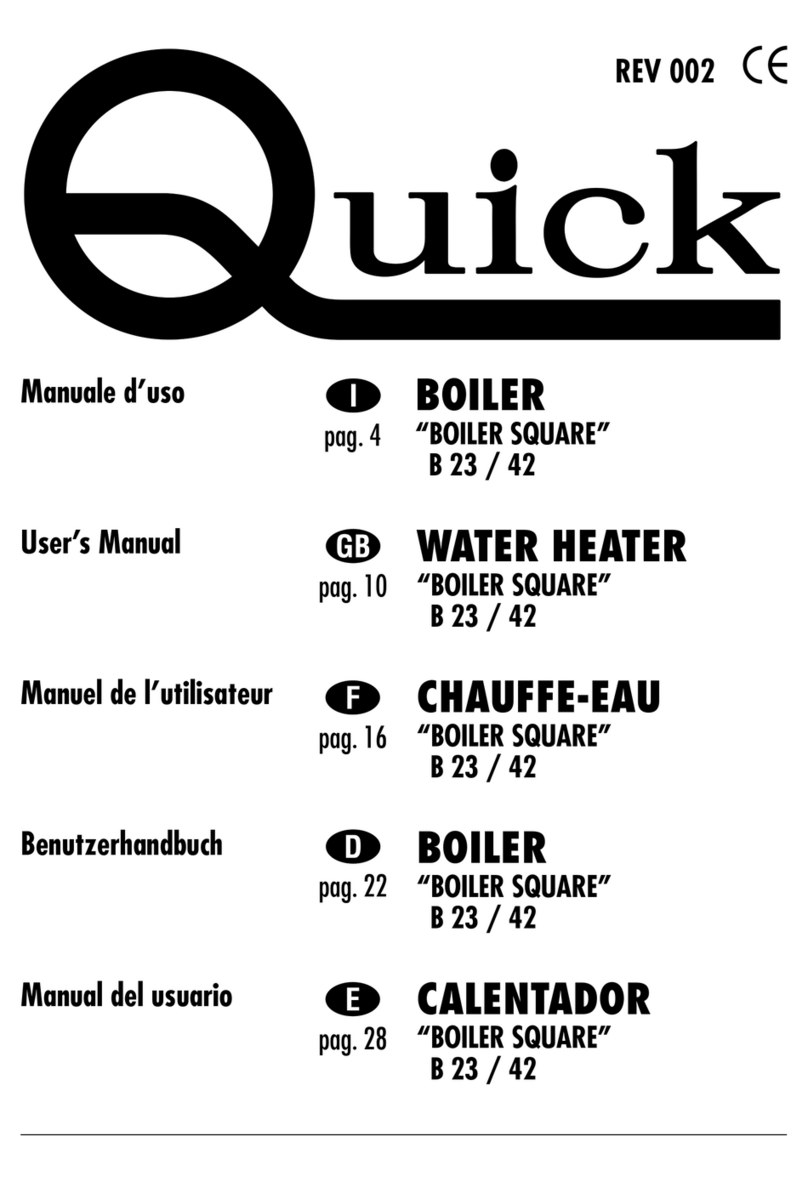
Quick
Quick Boiler Square B 23 user manual

Bosch
Bosch TRONIC 2000 T User and installation manual

lntellihot
lntellihot iQ251D Operation & installation manual
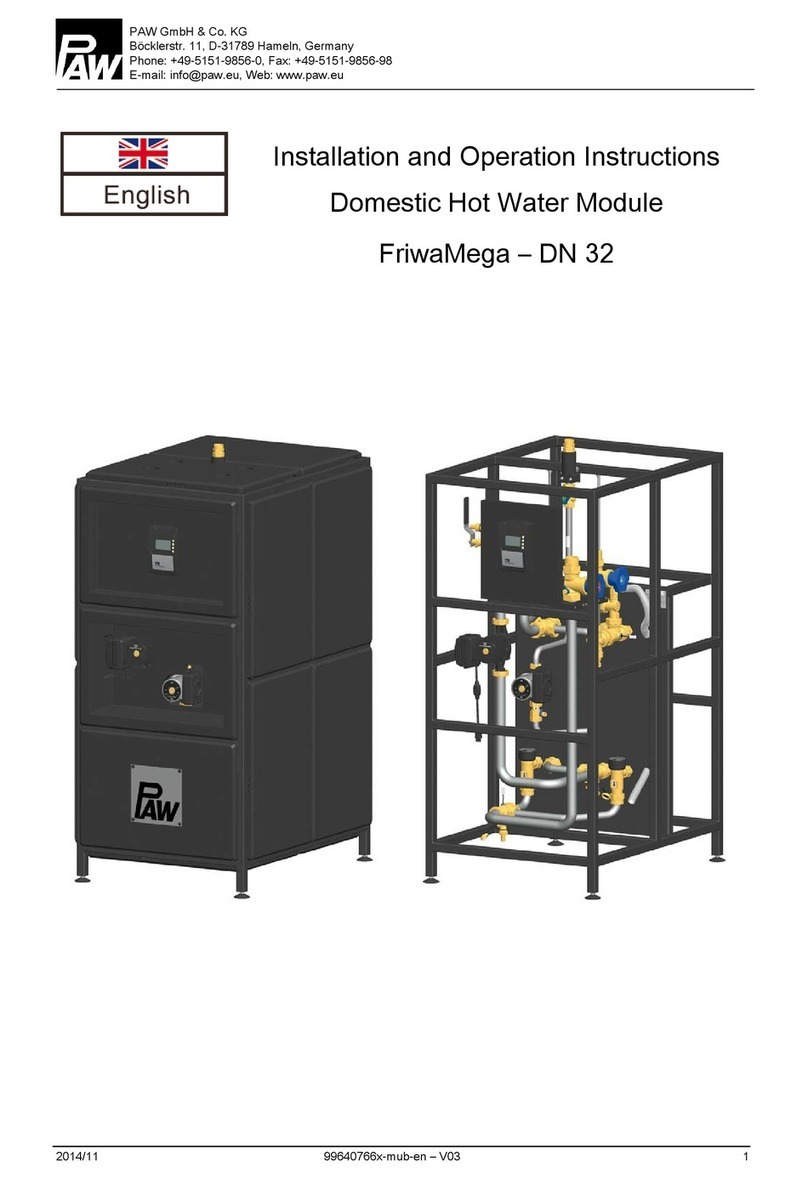
PAW
PAW FriwaMega - DN 32 Installation and operation instructions
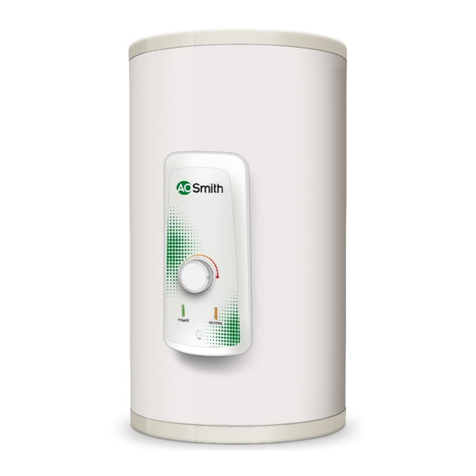
A.O. Smith
A.O. Smith HSE-VAS-X user manual
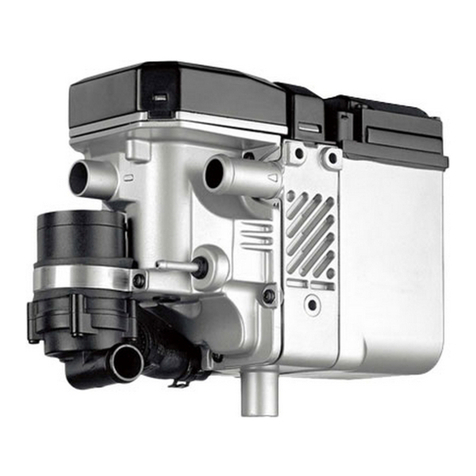
Webasto
Webasto thermotop C installation instructions
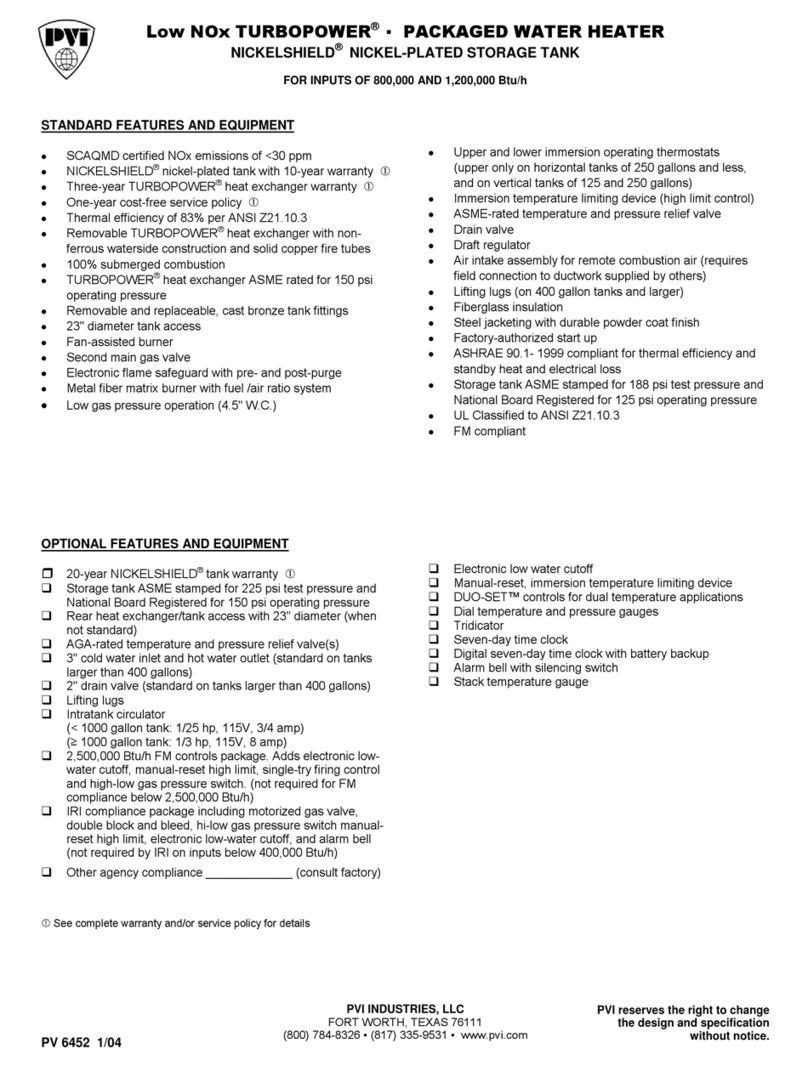
PVI
PVI NICKELSHIELD PV 6452 1/04 Specification sheet
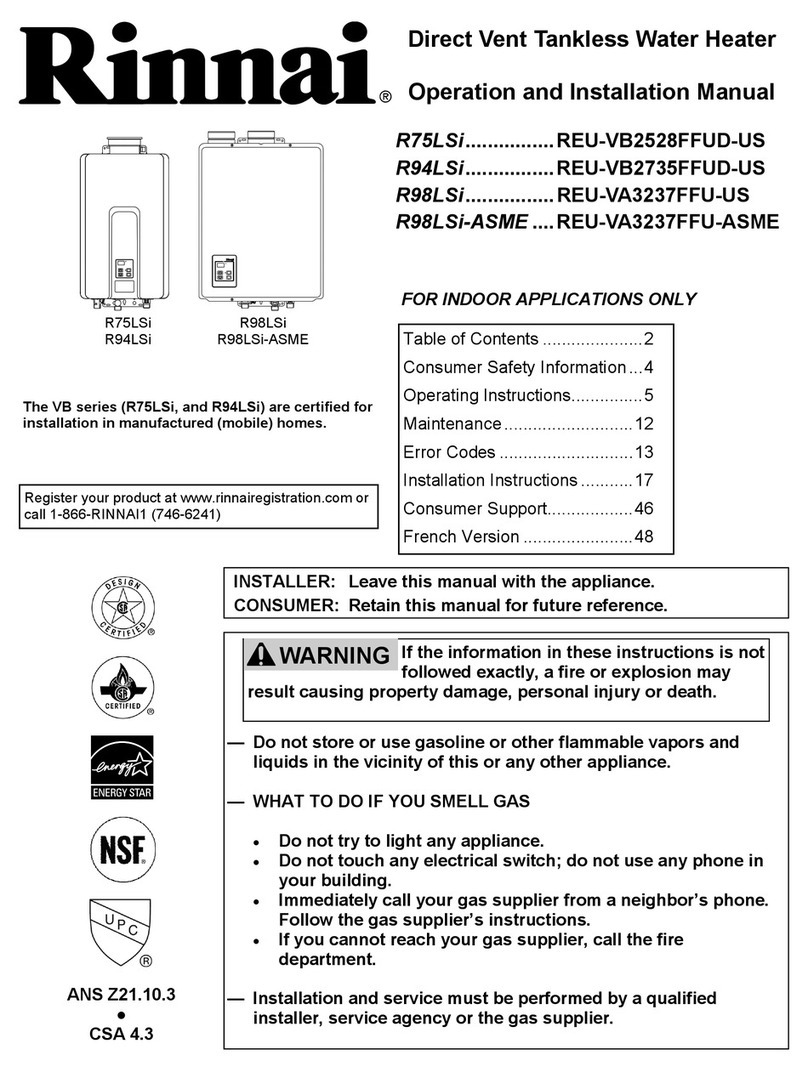
Sony
Sony VPL-CX75 Operation instructions
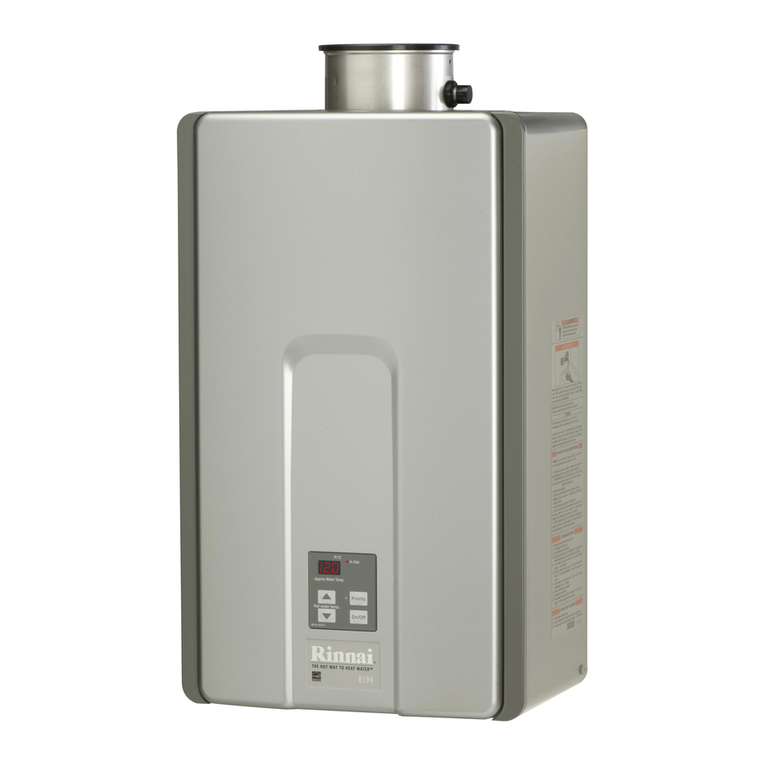
Rinnai
Rinnai Circ-Logic RL75i Installation and operation manual

